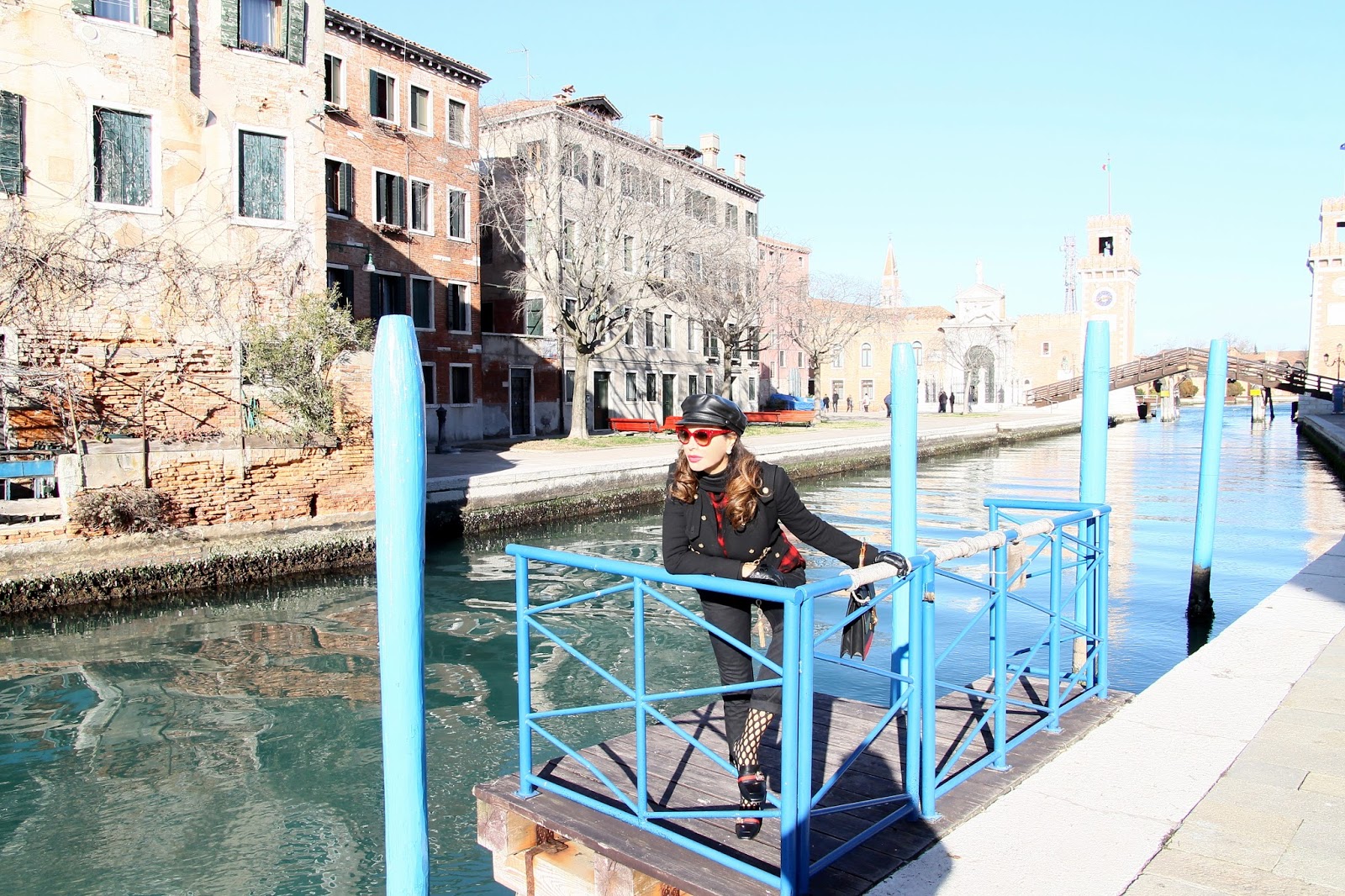
alte mura circondata da canali delimita, nascondendolo alla vista, il
grandioso complesso di darsene, scali coperti e scoperti, cantieri
acquatici, officine e magazzini da cui uscirono le flotte di
Venezia. L’Arsenale è stato per secoli il più grande del mondo, simbolo del potere e della
potenza militare della Repubblica marinara:
oltre 16 mila addetti e
cento galee in darsena pronte alla guerra.
istituisce un cantiere navale di Stato, la fabbrica venne considerata la prima al mondo
rappresentando così una struttura accentrata dell’economia
preindustriale e il periodo più florido della
Repubblica Serenissima, grazie alla costruzione di imponenti
navi che vennero utilizzate per combattere contro i Turchi nel Mar Egeo
e conquistare l’Europa.
una sorta di arco trionfale con attico decorato da un grande leone marciano
attribuito a Bartolomeo Bon; nel 1692-94 il ponticello venne
trasformato, a cura di Alessandro Tremignon, in una terrazza cinta da
cancellata con statue allegoriche barocche, ai cui lati furono collocati
due colossali leoni marmorei, preda di guerra di Francesco Morosini il
Peloponnesiaco. L’ingresso acqueo, accanto, è fiancheggiato da due belle torri merlate
realizzate nel 1686, che venivano utilizzate come gru per posizionare alberi e pennoni
sulle navi o per caricare e scaricare i cannoni.
Ché navicar non ponno – in quella vece / Chi fa suo legno nuovo e chi ristoppa / Le coste a quel che più viaggi fece; / chi ribatte da proda e chi da poppa; / Altri fa remi e altri volge sarte; / Chi terzeruolo e artimon rintoppa”.
circle of high walls surrounded by canals borders, hiding it from view,
the huge complex of docks, indoor and outdoor stairs, water
construction sites, workshops and warehouses which brought forth the
fleets of Venice. This Arsenal has been for centuries the biggest in the world, a symbol
of military power of the Venetian Maritime Republic: over 16 thousand
employees and hundred
galleys in the dock ready for war.
Its
origins date back to 1104, when the Doge Falier establishing a shipyard
State, the factory was considered the first in the world thus
representing a centralized pre-industrial structure of the economy and
the most prosperous period of the Serenissima Republic, thanks the construction of massive ships that were used to fight against the Turks in the Aegean Sea and conquer Europe.
You can reach the
land entrance, “Lion Gate”, alongside the waterway of ”
Arsenal Rio” and crossing the “Heaven Bridge”, and is marked by the beautiful
portal of 1460, a sort of triumphal arch with attic decorated by a big
lion marching attributed to Bartolomeo Bon; in
1692-94 the bridge was transformed, by Alessandro Tremignon, in a
walled terrace deleted with baroque allegorical statues, whose sides
were placed two colossal marble lions, spoils of war by Francesco
Morosini the Peloponnesian. The sea entrance, next door, is flanked by two beautiful crenellated
towers built in 1686, which were used as a crane to place trees and
flagpoles or on ships to load and unload the guns.
But no description of the Arsenale can beat that of Dante Alighieri’s sublime verses (Inferno, XXI, 7-15):
“As in the Arsenale of the Venetians / Boils in the winter the tenacious pitch / To smear their unsound vessels o’ er again, / For sail they cannot; and instead thereof / One makes his vessel new, and one recaulks / The ribs of that which many a voyage has made; / One hammers at the prow, one at the stern, / This one makes oars, and that cordage twists, / Another mends the mainsail and the mizzen”.
What Dante saw and so majestically describes was, at least for four centuries, the world’s greatest production site of the time, the beating heart of the Venetian maritime empire and the most impressive sight of intense industrial activity in the Midle Ages.
(Click here and here to read more about the military jackets trend).
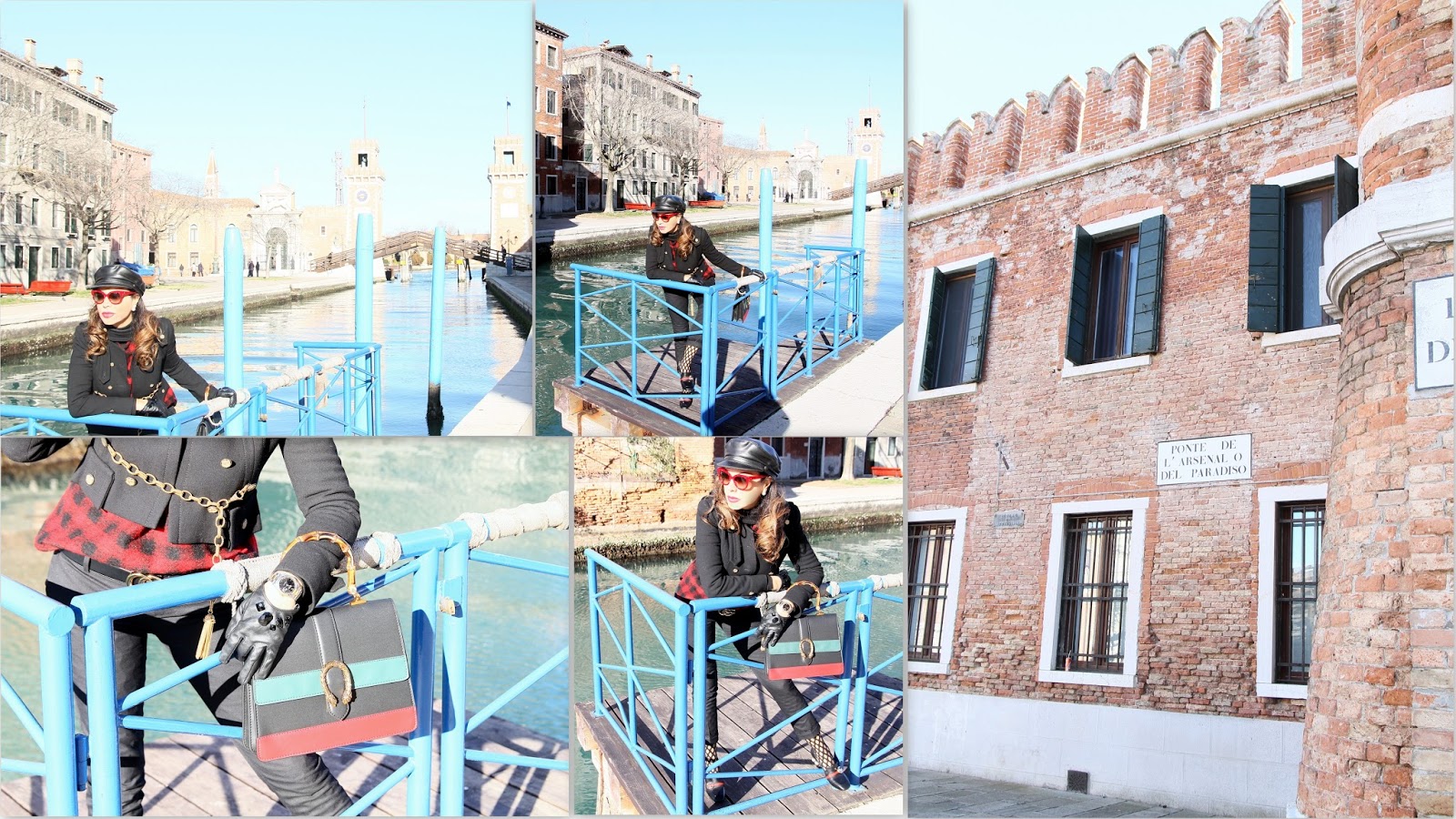
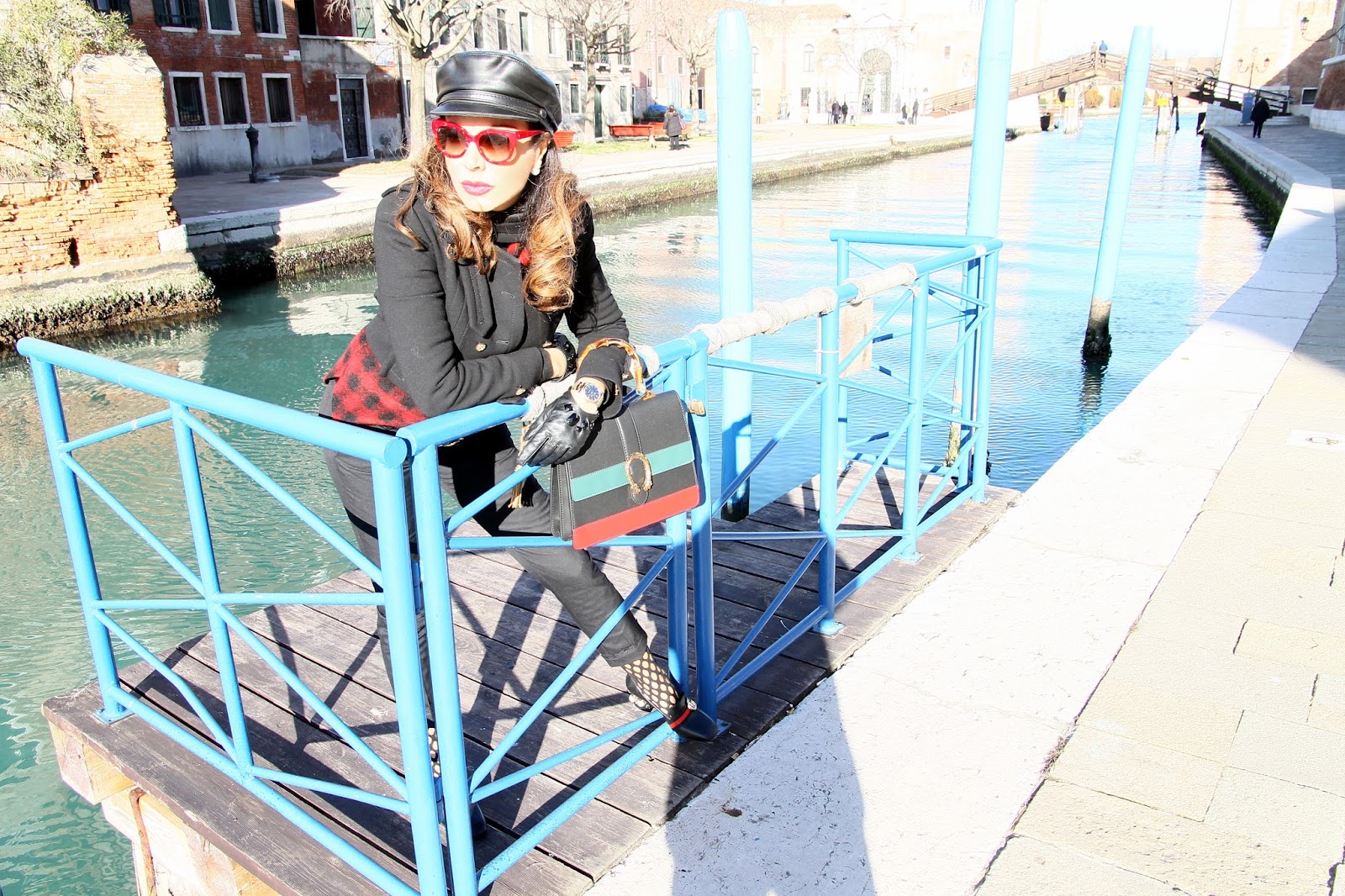
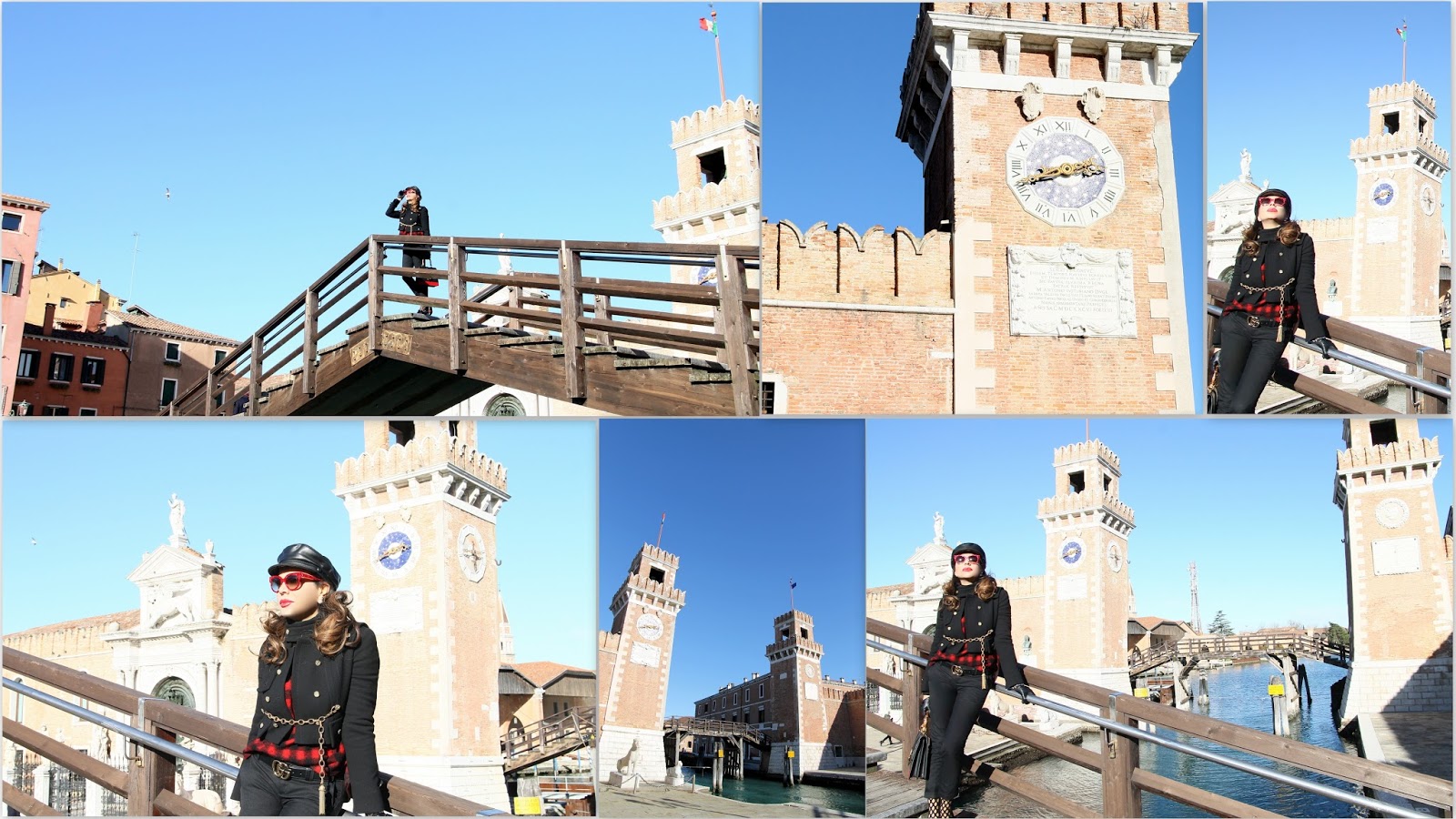
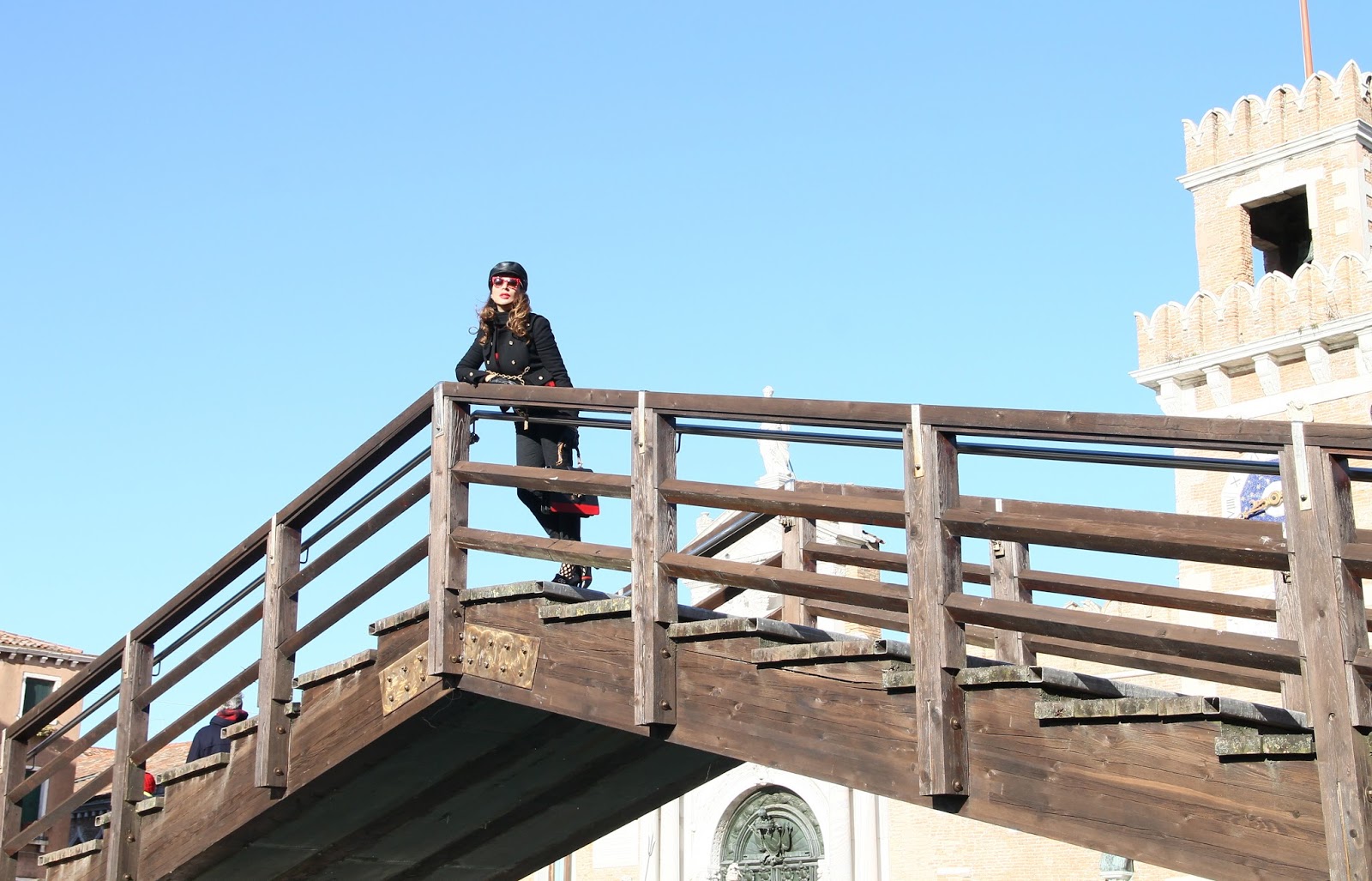


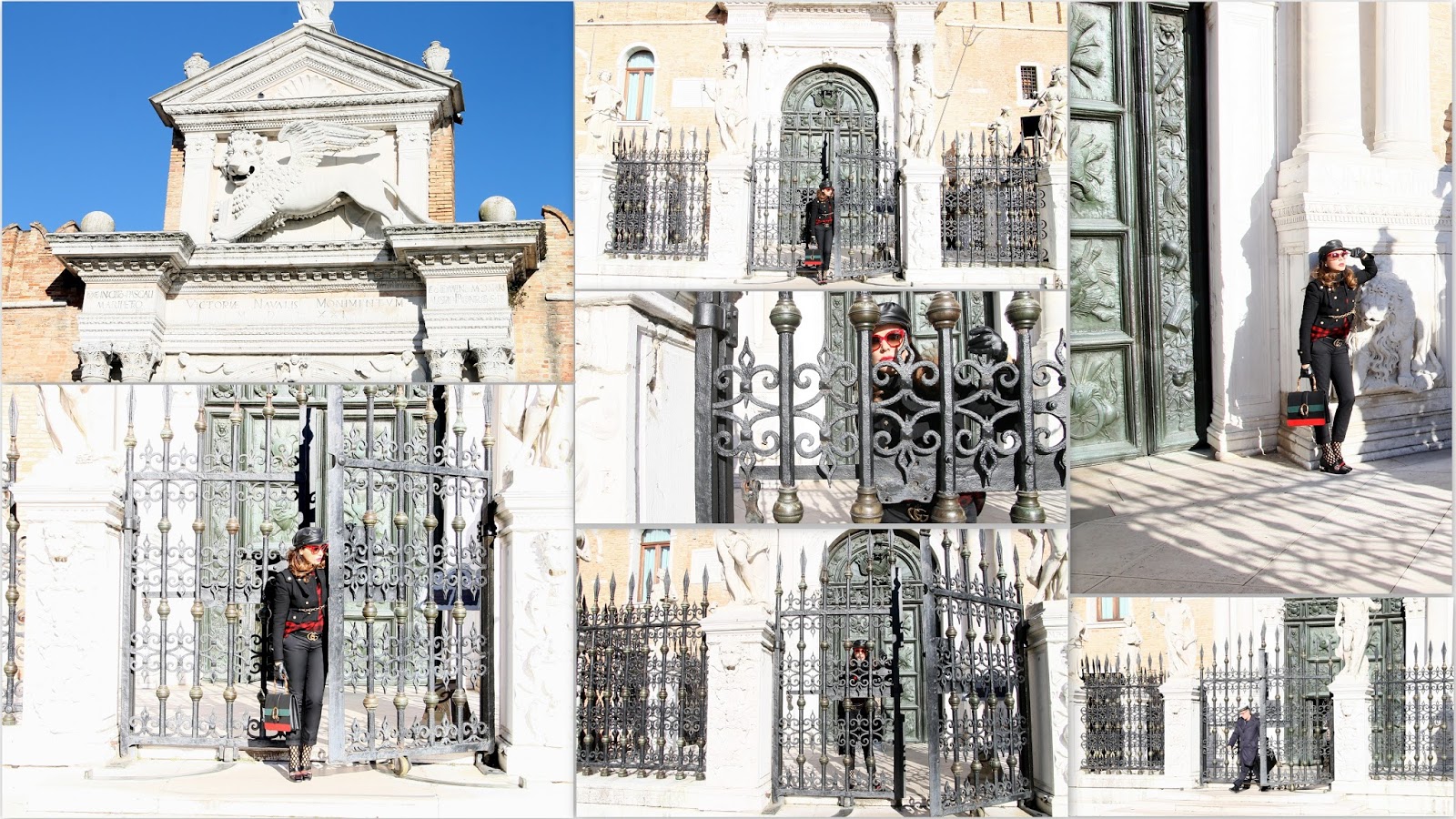
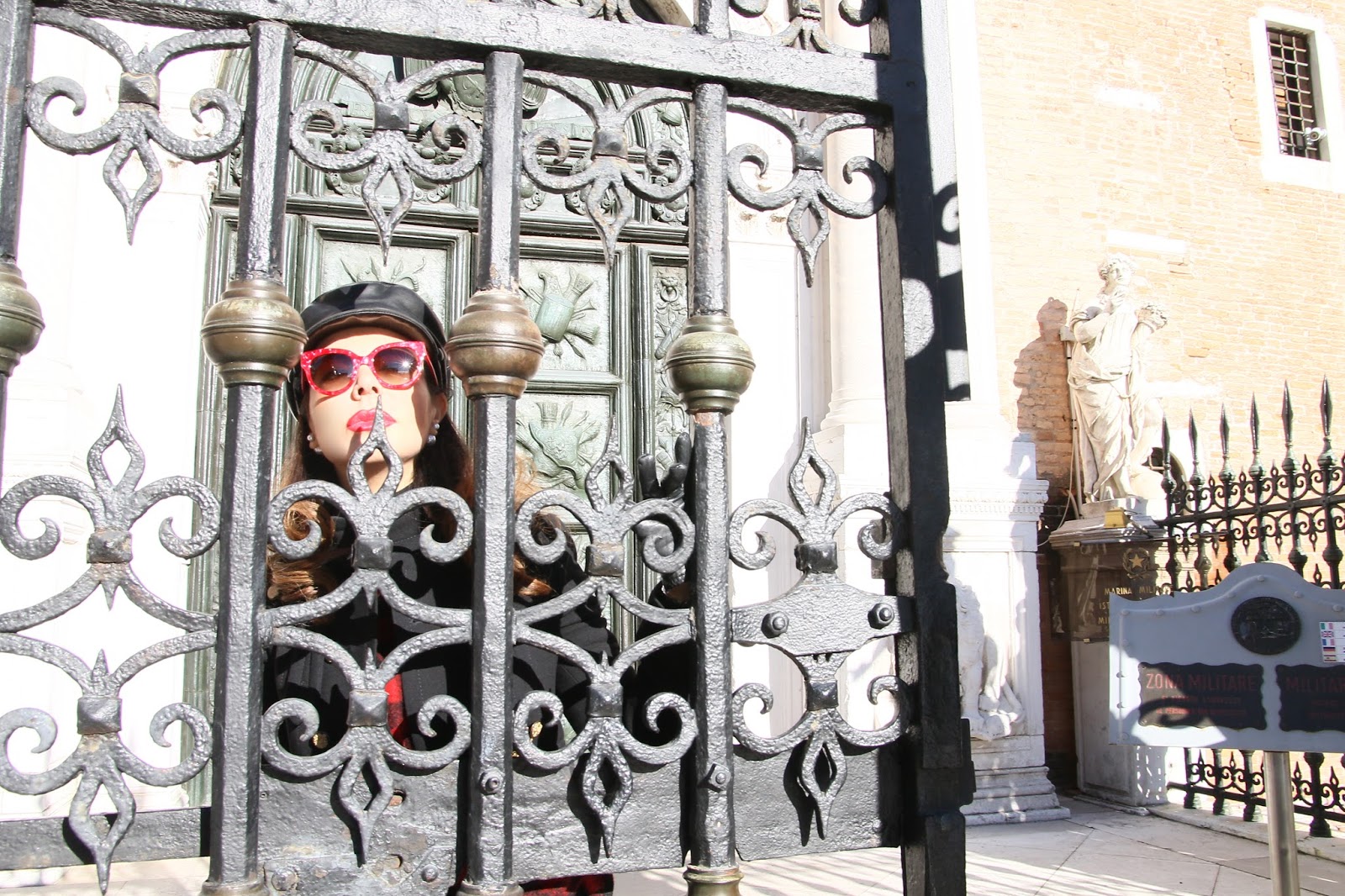
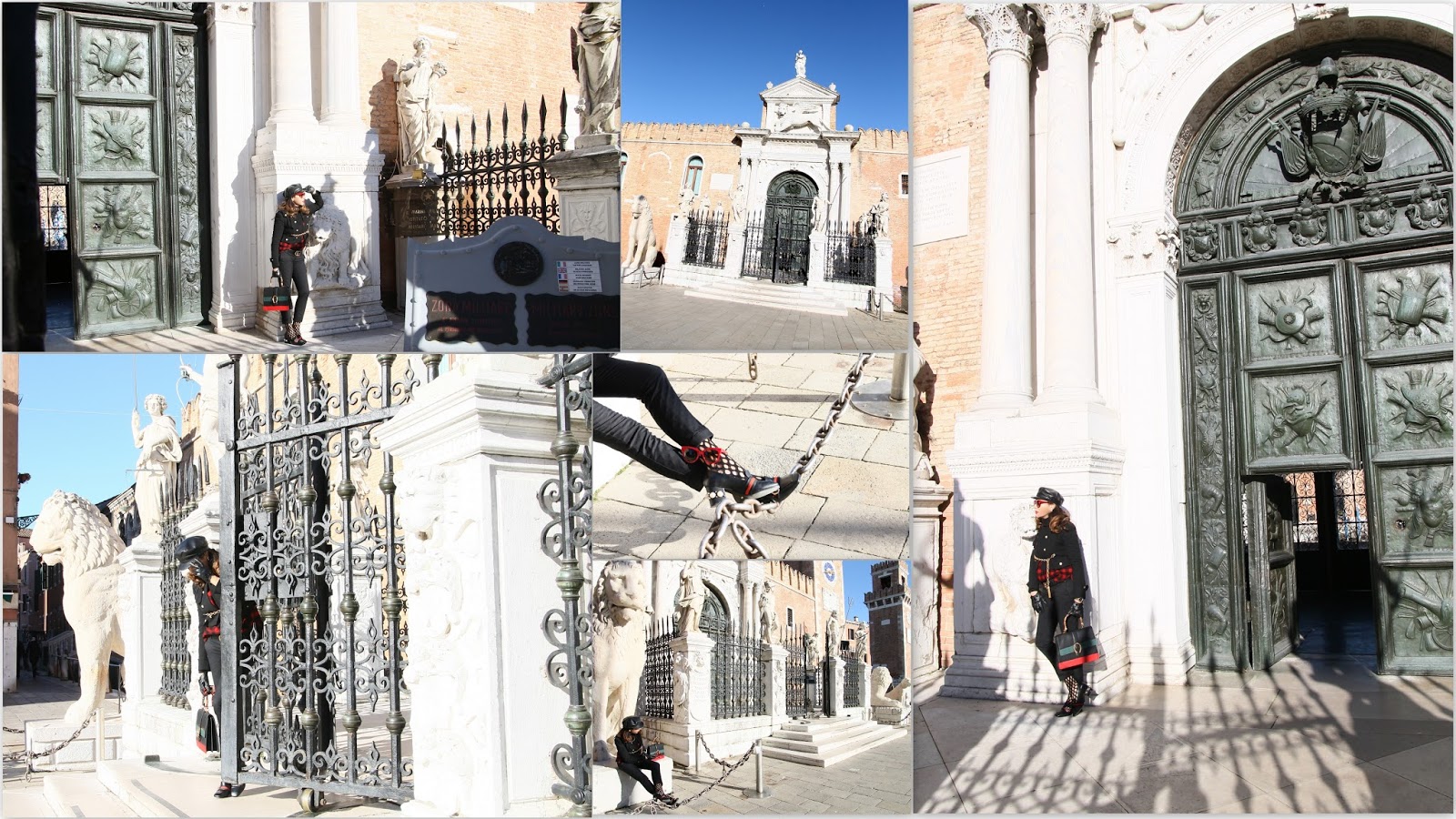
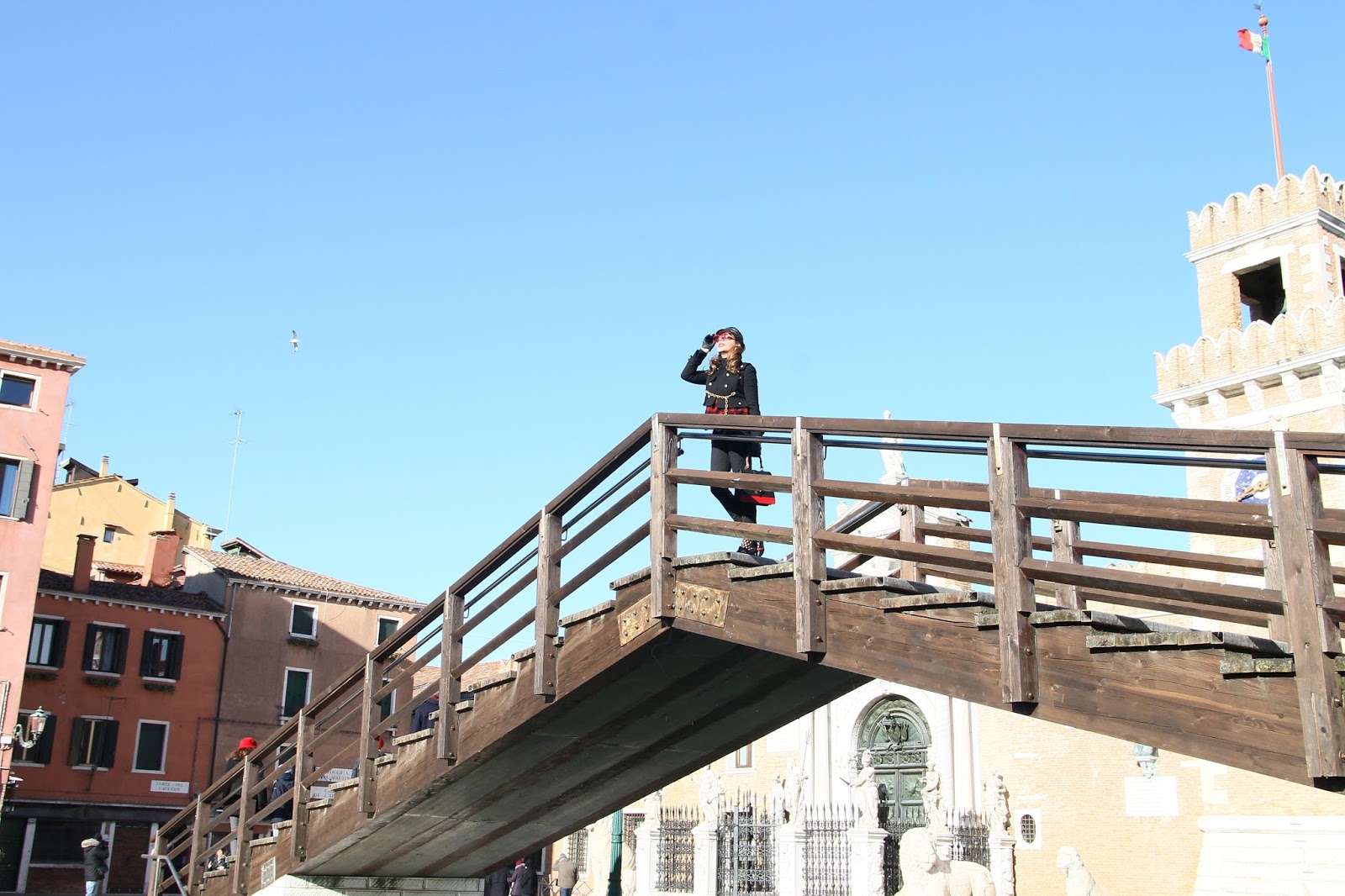



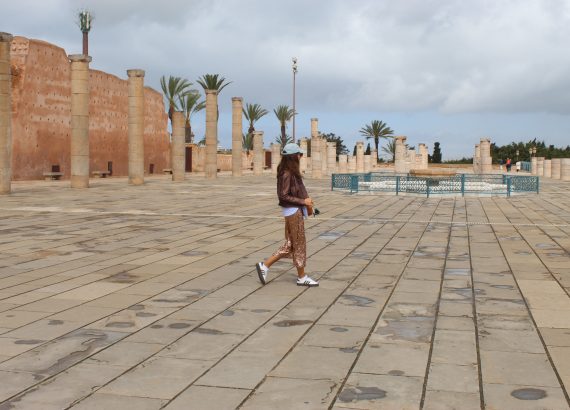
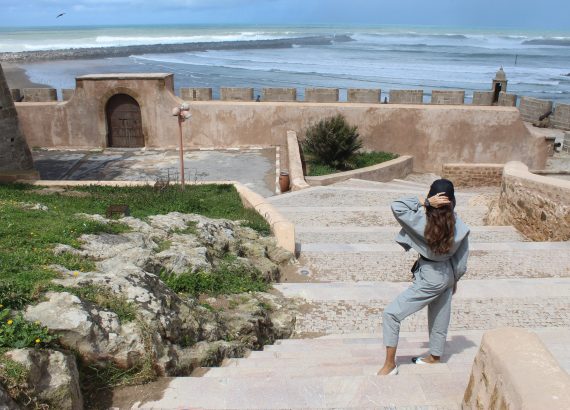
You look gorgeous dear x
THE PINK ELEPHANT SHOE // INSTAGRAM //
che bello questo look, belli quei dettagli in rosso che risaltano 🙂
http://www.carmy1978.com
Paola, such a great outfit for the backdrop of these photos.. you always look striking in red and black xox
You look stunning as always sweetie!!!! – http://www.domesticgeekgirl.com
I just need that hat. U look amazing, dear. Hat and leggins
Red and black look amazing on you Paola.
Simera |Beautetude
Another amazing outfit Paola!
Amazing look. Have a great week.
http://www.amysfashionblog.com/blog-home/
Come sempre originale e unica nei tuoi look. Kiss
Nuovo post “Pitti Bimbo 84: eventi e sfilate a cui parteciperò” ora sul mio blog http://www.littlefairyfashion.com
Amazing Pics
https://carrieslifestyle.com
Love everything you’re wearing – and I love those extra photos!
クリスチャンルブタン靴コピー
ルブタン 靴 コピー
Favolosa la location, come sempre oltre ai look sempre impeccabili, ci offri anche molto in fatto di cultura e ci porti in posti e città che non sempre conosciamo. Amo questo stile! baci Elisabetta
Wonderful photos my dear! You look perfect in this outfit!!! I love details on your socks (or tights?)
The red glasses adds the perfect touch to your look . Stunning as always.
http://www.pink-purpledots.blogspot.com
La mia preferita sei !!! sempre la Nr 1 . Gran classe e gusto.
Baci love
http://unconventionalsecrets.blogspot.it
Amazing post dear!
Have a nice day,
kiss
Sei sempre perfetta….fantastica!!!
baci baci
Marta
http://www.lagattarosablog.it
Che look Paola, sempre strepitosa! Location incantevole.
Un bacione! 💕 F.
La Civetta Stilosa
Espectacular! Me encanta el look completo!
"Vestido geométrico: Collectif London" en:
https://ananuevatemporada.wordpress.com/
Besos!
Ana
Venezia è incantevole ed anche tu lo sei con questo look military-inspired Paola, stai benissimo e sei molto sexy! Un bacio!:*
Fantastic…love your hat!! Always beautiful. I hope you have a great week x
que fotos mas chulas,me encanta la gorra!
Muchas gracias por tu comentario en mi blog cielo!
Te espero por mi nuevo post, mil besos!
http://patriciasanchezstylestreet.blogspot.com.es/
Beh devo dire che Venezia è sempre affascinante come le tue foto del resto! Proprio nelle!!!
http://www.glitterchampagne.com
Belle
Fierce and bellisima
Military chic at its best babe! Happy Monday 🙂 xx
http://www.fashionjazz.co.za
Wow ! What a photos ! kisses :*
http://wear-owska.blogspot.com/
As always I loved this outfit dear.
Have a nice week,
Emma
http://www.emmalovesfashion.com
STUPENDA!!! quanto mi piace questo outfit!!!
http://www.thefashionprincess.it/
Nice photos and I absolutely love that outfit
Adoro lo stile della giacca!
I dettagli rossi che risaltano da questo outfit poi sono davvero unici!
IMPOSSIBILE FERMARE I BATTITI //PAGINA FB
love it! xxx
stylentonic.com
Thanks bros, have a nice Monday!
Fantastic!
** Join Love, Beauty Bloggers on facebook. A place for beauty and fashion bloggers from all over the world to promote their latest posts!
BEAUTYEDITER.COM
Oh wow, love to visit this place too, dear! xoxo
Awwwh lovely pictures.. The location looks really cool.
Glowyshoes's blog
My Facebook
Instagram
Wow!you look stunning!!!
Love the combination of outfit!xx
so nice pics= ]
xoxo
new post
http://www.live-style20.blogspot.com
Aw, the magical Venice, love it. Great outfit!
Splendido post, molto interessante lo scritto e il look è stupendo!
Stai divinamente con il rosso e nero! Splendidi dettagli!
Buon inizio settimana Paola 🙂 molto particolare il tuo outfit di oggi e splendide foto illuminate dal sole 🙂
La borsa di Gucci con i manici in bambù è un vero incanto!
VENEZIAAA! LA ADORIAMO!!!
Pazzesca la giacca!!! 😉
Baci
Elisa & Agnese
http://desiresinstyle.com/
Great look dear. Please comment without links in my blog. Xoxo
Bellissimo il look! Bellissima la borsa!!!
http://www.theshadesofmartina.com
So stylish and chic in Venice. Love your Gucci loafers and bag.
sono proprio inamorata di questa giacca! Mi e sempre piacuto il stilo militare.
Sei stupenda! Ti sta molto bene questo look.
Bellissima location e foto!
Venezia è spettacolare tutta quanta! Ci sono stata un sacco di volte ma non mi stanco mai di tornarci!
E come location per i tuoi look direi che è pèerfetta, elegante e stilosa come te, sei stupenda! 😀
PS: grazie mille per il trucchetto che mi hai suggerito per evitare che l'umidità mi increspi i capelli, l'ho già provato e funziona! Sei stata proprio carinissima, oltre che preziosa!
Tanti baci!
S
http://s-fashion-avenue.blogspot.it
Che meraviglia tutto il look dalla testa ai piedi…semplicemente perfetta, affascinante, meravigliosa! Bacioni
Fashion and Cookies – fashion and beauty blog
Lovely.